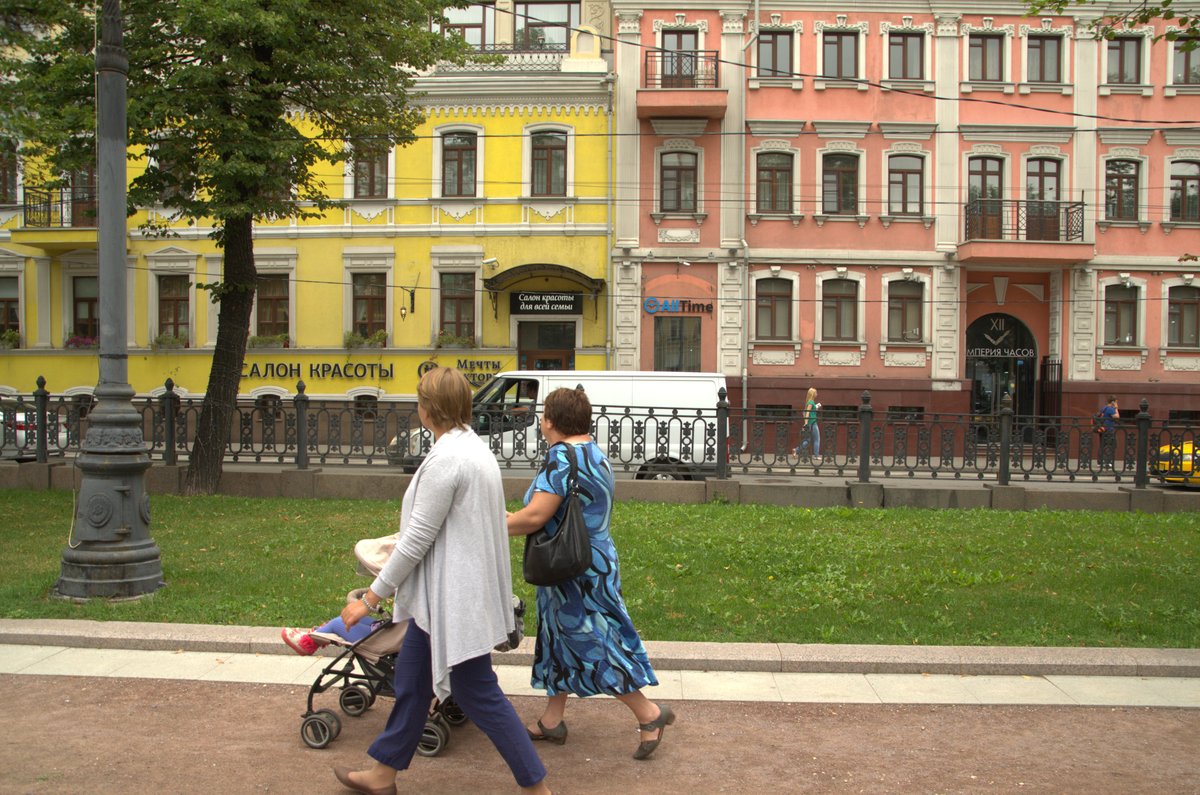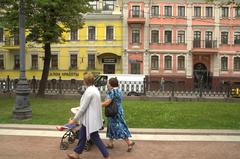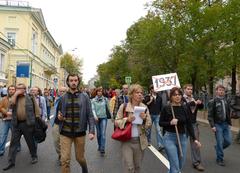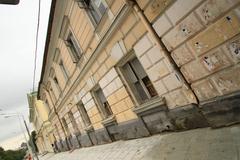
Petrovsky Boulevard Moscow: Visiting Hours, Tickets, and Historical Sites Guide
Date: 14/06/2025
Introduction
Petrovsky Boulevard is a distinguished and historic segment of Moscow’s celebrated Boulevard Ring, offering visitors a captivating blend of cultural heritage, architectural splendor, and verdant urban spaces. Established after the 1812 Fire of Moscow and laid out on the site of the former White City fortifications, the boulevard symbolizes Moscow’s transformation from a medieval stronghold to a modern metropolis. Named after the venerable Vysoko-Petrovsky Monastery, Petrovsky Boulevard serves as a living museum of Russian history, showcasing neoclassical mansions, Soviet-era constructivist buildings, and vibrant cultural landmarks like the Moscow Art Theatre and Petrovsky Passage.
Easily accessible via metro stations such as Trubnaya and Pushkinskaya, the boulevard is pedestrian-friendly, filled with wide walkways, mature trees, and inviting benches. Its strategic location links prominent sites including the Bolshoi Theater, Pushkin Square, and Trubnaya Square, making it an essential gateway into Moscow’s historic center. There is no entrance fee to visit, and the area is enriched by a calendar of cultural events and festivals throughout the year.
This comprehensive guide details the boulevard’s history, architectural highlights, visitor information (including hours and ticketing), seasonal travel tips, accessibility, and nearby attractions, ensuring you can make the most of your visit to this iconic Moscow destination (Russia Beyond, WeHeart.Moscow, Seasons Year).
Contents
- Origins and Early Development
- Naming and Religious Significance
- Urban Growth and Architectural Evolution
- Transportation and Modernization
- Visitor Information: Hours, Tickets, and Accessibility
- Nearby Attractions and Itinerary Suggestions
- Cultural and Social Role
- Preservation and Contemporary Challenges
- Visuals and Media
- Frequently Asked Questions (FAQ)
- Conclusion
Origins and Early Development
Petrovsky Boulevard traces its roots to the late 18th and early 19th centuries. Built on land once occupied by the defensive White City walls—originally constructed in 1585—the area was redeveloped into the Boulevard Ring after the walls were dismantled between the 1770s and 1780s. The ring was part of a vision to modernize Moscow after the devastation of the 1812 Fire, introducing neoclassical urban planning and elegant public spaces.
Naming and Religious Significance
The boulevard’s name, along with nearby Petrovka Street and Petrovsky Gates, originates from the Vysoko-Petrovsky Monastery. Founded in the early 14th century, this monastery has played a significant role in the area’s spiritual and cultural heritage.
Urban Growth and Architectural Evolution
In the 19th century, Petrovsky Boulevard became home to neoclassical mansions, city estates, and later, tenement houses and constructivist residences, reflecting Moscow’s evolving architectural tastes. Notable landmarks include the Moscow Art Theatre, Petrovsky Passage, and various historic estates once owned by prominent families. While some buildings have been lost to development, much of the boulevard’s historical character remains.
Transportation and Modernization
The boulevard has long been a key transportation corridor, evolving from horse-drawn trams in the 1880s to electric trams and later trolleybuses. Today, the area is well-served by metro lines (Trubnaya, Pushkinskaya, Chekhovskaya, and Tverskaya) and multiple bus and trolleybus routes, making it easily accessible for visitors.
Visitor Information: Hours, Tickets, and Accessibility
- Visiting Hours: Petrovsky Boulevard is a public promenade open 24/7 year-round. For optimal experience, visit during daylight hours (9 AM–8 PM).
- Tickets and Entrance Fees: There is no entrance fee for the boulevard. Admission fees may apply for nearby museums or attractions.
- Accessibility: The boulevard is pedestrian-friendly, with smooth pavements, ramps at crossings, and benches. Most nearby public attractions are accessible, though some historical buildings may have limited facilities.
- Guided Tours: Numerous walking tours are available through local operators, often including Petrovsky Boulevard as part of broader Moscow heritage itineraries. Audio guides and mobile apps can further enrich your visit.
Nearby Attractions and Itinerary Suggestions
Petrovsky Boulevard’s prime location makes it easy to explore Moscow’s historic heart:
- Bolshoi Theater: One of Russia’s most renowned cultural institutions, located a short walk away.
- Petrovka Street: Lined with historic architecture and shopping opportunities.
- Trubnaya Square and Strastnoy Boulevard: Each with unique charm and history.
- Vysoko-Petrovsky Monastery: A must-see spiritual site near the boulevard.
- Moscow Art Theatre (MKhAT): Historic venue for theater enthusiasts.
- Petrovsky Passage: A grand shopping arcade showcasing early modernist architecture.
Consider extending your walk along the entire Boulevard Ring for a comprehensive urban experience.
Cultural and Social Role
Petrovsky Boulevard has long been a popular gathering place for Muscovites, offering a tranquil, green setting for relaxation, strolls, and cultural events. The area hosts open-air exhibitions, music performances, seasonal festivals, and is a favorite spot for artists and writers, both past and present (WeHeart.Moscow).
Preservation and Contemporary Challenges
Ongoing restoration and conservation efforts aim to preserve the boulevard’s historic facades and landscaping while integrating modern infrastructure. Balancing heritage with contemporary urban needs is a continuous process, ensuring that Petrovsky Boulevard remains both vibrant and historically authentic.
Visuals and Media
Before your visit, explore interactive maps, virtual tours, and photo galleries online to familiarize yourself with the boulevard’s layout and architectural highlights. High-quality images and virtual experiences enhance understanding and appreciation of this urban landmark.
Seasonal Tips and Practical Advice
Best Times to Visit
- Spring (April–June): Pleasant temperatures, blossoming trees, and outdoor cafes.
- Summer (July–August): Warmest months, lively street events, occasional rain showers.
- Autumn (September–October): Mild weather, vibrant foliage, fewer tourists.
- Winter (December–February): Festive lights and snow, but cold—dress warmly.
Packing Suggestions
- Spring/Autumn: Layered clothing, waterproof jacket, comfortable shoes.
- Summer: Light clothing, sun protection, umbrella.
- Winter: Warm clothing, hat, gloves, insulated boots.
Safety, Etiquette, and Facilities
- The boulevard is safe and well-lit; exercise standard city precautions.
- Polite greetings (“Zdravstvuyte”) are appreciated. Dress modestly in churches.
- Cafés and restaurants offer restroom facilities; public toilets are limited.
Accessibility
Petrovsky Boulevard is generally accessible for people with mobility issues, with smooth pavements and curb cuts. Some historic interiors may be less accessible.
Frequently Asked Questions (FAQ)
Q: What are Petrovsky Boulevard’s opening hours?
A: The boulevard is open 24/7 as a public space. Daytime visits are recommended for safety and sightseeing.
Q: Is there an entrance fee?
A: No, access to the boulevard is free. Some adjacent museums or theaters may charge admission.
Q: Are guided tours available?
A: Yes, walking and audio-guided tours are available from local providers.
Q: What is the best time to visit?
A: Late spring to early autumn offers the best weather and event calendar.
Q: How do I get there by public transport?
A: Closest metro stations are Trubnaya, Pushkinskaya, Chekhovskaya, and Tverskaya. Bus and trolleybus routes also service the area.
Q: Is Petrovsky Boulevard accessible for people with mobility issues?
A: Yes, the boulevard is mostly accessible, though some historic buildings may not have full facilities.
Summary and Final Tips
Petrovsky Boulevard is a vibrant testament to Moscow’s layered history, architectural diversity, and dynamic urban life. Its blend of neoclassical mansions, Soviet constructivist structures, and green promenades invites visitors to experience Moscow’s cultural and historical richness firsthand. With easy access, free public entry, and a host of nearby attractions, it is an essential stop for any traveler seeking to explore the heart of Moscow.
To make the most of your visit:
- Plan for the season and weather.
- Take advantage of guided tours for deeper insights.
- Explore nearby landmarks and cultural venues.
- Respect local customs and contribute to the preservation of this historic site.
For additional resources and the latest information, refer to official Moscow city portals and trusted travel guides.
Official Sources and Further Information
- Russia Beyond: Must-Visit Places in Moscow
- WeHeart.Moscow: Walking in Moscow
- Seasons Year: Moscow
- Moscow City Official Portal
For detailed climate data and seasonal advice:























































































































































































































































































